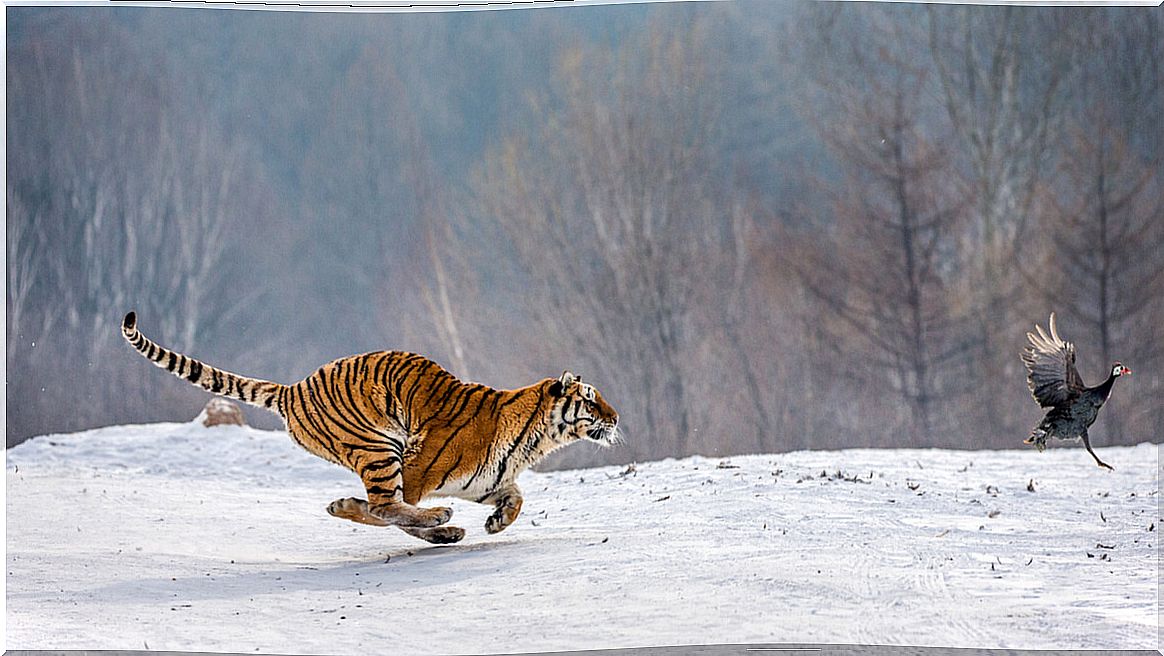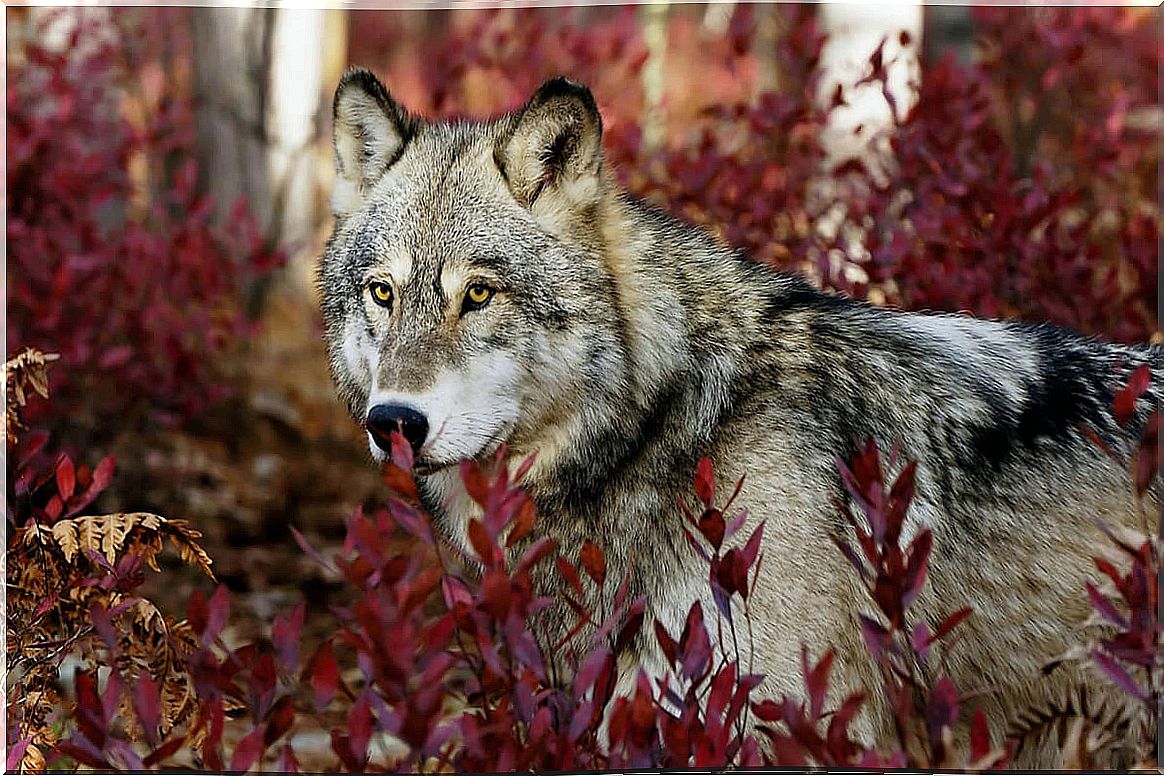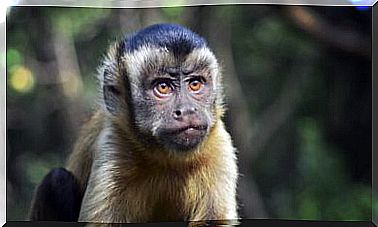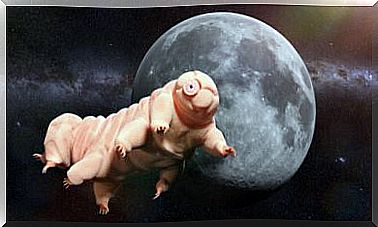What Is The Ecology Of Fear?

The ecology of fear is a novel concept that changes a lot about how we view predator-prey interactions. Surprisingly, much of the ability of predators to regulate prey does not lie in predation itself, but in other phenomena.
In nature, everything is based on surviving long enough to leave offspring and genetic imprints. Keep reading, because here we will explain what the ecology of fear consists of and what implications it has.
Predators and prey, a complex relationship
For decades, biologists have considered that, for an ecosystem to be healthy, the presence of predators is essential. Without them, the primary consumers (herbivores) can get out of control and unbalance the entire food chain. This effect of predators on consumers is known as the trophic cascade or top down effect .
The trophic cascade is simply the ability of predators to control prey populations. In doing so, these reduce the pressure of herbivores on plants and allow food webs to be stable and durable.
Historically, this effect of predators on the ecosystem was considered to come from predation itself: carnivores hunt herbivores and, over time, reduce their population.
However, recent studies show that carnivores have a profound psychological impact on their prey, causing them to behave differently. This is what is known as the ecology of fear.

Fear: more relevant in nature than it seems
The ecology of fear refers to all those properties of the ecosystem shaped by the fear of herbivores to their predators. Although a priori it may not seem so important, the truth is that the fear of being predated is important in these animals.
When Charles Darwin visited the Galapagos on his research trips, he discovered to his surprise how birds did not flee when he approached to observe them. The birds of these islands were not used to human presence and did not identify it as a potential predator. This is the opposite of what usually happens.
Animals behave differently when predators are in their area: they are more alert, more nervous and less relaxed. When large predators are removed from an ecosystem, herbivores are indirectly encouraged to relax and move little, thus putting a lot of pressure on the plants they consume.
Moose That Fears Wolves: A History of the Ecology of Fear
So some studies have shed some light on this issue. One of the best known is the behavior of the moose following the reintroduction of the wolf to Yellowstone in the 1990s.
Yellowstone National Park – in the US – had no wolves since the early 20th century. When it disappeared, the population of elk, a large herbivore, had multiplied. This had serious consequences on the park’s plants and shrubs, which were heavily degraded by the large herds of elk.
When the wolves were introduced again, they were expected to reduce the number of moose by predation. The surprise came when they saw that it was not the number of moose that had changed , but their behavior: the moose were afraid of wolves.
The studies showed that, with the presence of the wolf, the moose moved more, ate less of the same place and were more alert in places where there were predators that endangered their lives – and that of their offspring.
This ecology of fear caused the moose to reduce their pressure in the same areas of grass. Thus, plants were indirectly allowed to recover easily from herbivory, which improved the functionality of the ecosystem.
From wolves to sharks: this is how the ecology of fear works
While these examples of terrestrial ecology have been easily studied on land, the truth is that this theory has also been tested at sea, although it is a more difficult task. We tell you an example.
The dugong is a large marine mammal – similar to the manatee – that inhabits the coastal waters of the Indian Ocean. It feeds on shallow water aquatic plants, so it can quickly deplete them where its population numbers are high.
Some studies have shown that dugongs fear sharks in the same way that moose fear wolves. Wherever sharks are abundant, dugongs avoid the area. This allows seagrass beds and the communities that depend on them to recover quickly from the pressure of this mammal.

So, as you can see, the ecology of fear is nothing more than the effects on the behavior of prey that predators exert, which has been shown to be the key to regulating the balance of ecosystems. Therefore, we can affirm how important the predation effect is as important as the fear exerted by predators in ecological balances.









